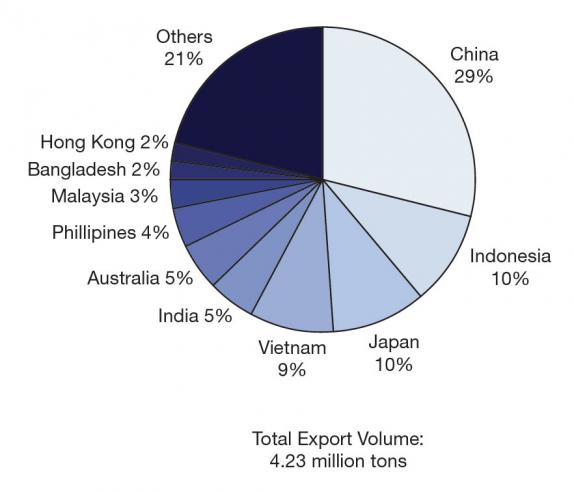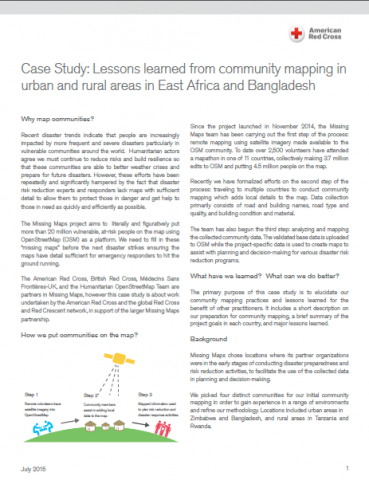Cement exports from Bangladesh are on the rise. They are gaining global attention. If you want to export AKIJ Cement
This growth story is fascinating and worth exploring. Bangladesh, once known for its garments, now shines in cement too. The country’s cement industry has evolved rapidly. With increasing production capacity, it aims to meet international demand. Exporting cement is not just about business.
It’s about building global connections. Bangladesh’s cement exports reflect its industrial strength. They show a shift in the country’s economic landscape. Understanding this growth offers insights into new market dynamics. It highlights the potential for emerging economies. Dive into this narrative to see how Bangladesh is making its mark. Learn how this growth impacts both local and global markets. Discover the factors driving this impressive journey.
Introduction To Cement Industry In Bangladesh
The cement industry in Bangladesh has evolved significantly over the past few decades. From modest beginnings, it has grown into a major player in the country’s economy. This growth has not only met the domestic demand but also paved the way for exports, making Bangladesh a notable name in the global cement market.
Historical Background
The cement industry in Bangladesh began its journey in the early 1990s. Initially, production was limited, and the country relied heavily on imports to meet its needs. However, as local companies began to establish their plants, the landscape changed.
By the early 2000s, Bangladesh had become self-sufficient in cement production. Many of the leading companies today started during this period, laying the foundation for future growth. These companies brought in modern technologies and expertise, which significantly improved production capabilities.
Current Market Overview
Today, the cement industry in Bangladesh boasts over 30 active companies. The total production capacity has exceeded 58 million tons per year. This capacity has not only satisfied local demand but has also positioned Bangladesh as a competitive exporter of cement.
Companies like AKIJ Cement, Shah Cement, Bashundhara Group, and Holcim are leading the market. They have established strong brands and built a reputation for quality, both locally and internationally. These companies use state-of-the-art technology and maintain stringent quality control to ensure their products meet international standards.
Interestingly, Bangladesh’s geographical location offers a strategic advantage for exports. Proximity to countries like India, Myanmar, and the Middle East opens up significant market opportunities. This strategic positioning, combined with competitive pricing and quality products, has helped cement exports grow steadily.
Are you aware of the untapped potential in this sector? With the global construction boom, the demand for high-quality cement continues to rise. This presents an exciting opportunity for Bangladesh to further increase its export footprint.
Have you ever thought about how this growth impacts the local economy? Cement exports contribute significantly to the country’s GDP, create jobs, and drive infrastructure development. As the industry continues to expand, these benefits will only multiply.
The cement industry in Bangladesh is a testament to how local industries can evolve and compete on a global scale. With continued innovation and investment, the future looks promising for this sector.
Key Players In Bangladesh’s Cement Sector
Bangladesh’s cement sector sees leaders like AKIJ Cement, Shah Cement, Premier Cement, and HeidelbergCement driving export growth. These companies expand global reach, boosting the country’s economic footprint in international markets.
Bangladesh’s cement industry is growing rapidly. This growth is driven by key players in the sector. These companies have shaped the market and influenced global exports. Understanding these players is crucial for grasping the industry’s dynamics.
Major Manufacturers
Several major manufacturers dominate Bangladesh’s cement industry. These companies produce high-quality cement for local and international markets. Among them, companies like Shah Cement, Bashundhara Cement, and HeidelbergCement Bangladesh are well-known. They have extensive facilities and advanced technologies. Their focus on quality and efficiency sets them apart. Each company plays a vital role in fulfilling the country’s cement demand.
Market Share Analysis
In the competitive cement market, market share is key. Shah Cement holds the largest market share. Its production capacity is among the highest. Bashundhara Cement follows closely, securing a significant portion. HeidelbergCement Bangladesh also maintains a strong presence. These companies invest in research and development. Their aim is to increase their market share further. Understanding their strategies offers insights into market trends. The cement sector’s growth relies heavily on these leaders.
“`
Export Trends And Statistics
Bangladesh has made significant strides in the cement industry. The country’s cement exports have seen notable growth over the years. Understanding the trends and statistics can provide insight into this progress. This section will delve into historical data and recent growth patterns.
Historical Export Data
In the early 2000s, Bangladesh began exporting cement. The volumes were modest at first. By 2010, the exports started to gain momentum. Bangladesh exported around 10 million tons in the early years. This marked a strong start for the industry.
From 2010 to 2015, the export volume showed consistent growth. The yearly increase was about 5%. By 2015, the export volume had doubled. This steady rise highlighted the sector’s potential.

Recent Growth Patterns
In the past five years, cement exports have seen a sharper rise. Recent data shows an average growth rate of 15% annually. This is a significant improvement compared to earlier years. The demand from neighboring countries has played a key role.
By 2022, Bangladesh’s cement exports reached 25 million tons. The increase is driven by both quality and competitive pricing. The industry has focused on improving production standards. Investment in technology has also contributed to this growth.
The future looks bright for Bangladesh’s cement exports. The industry aims to maintain the upward trend. Efforts are being made to explore new markets globally.
Factors Driving Export Growth
The growth in cement exports from Bangladesh has been remarkable. Various factors drive this upward trend. These include economic drivers and technological advancements. Each plays a crucial role in shaping the industry’s export landscape. Understanding these factors provides insight into Bangladesh’s cement export potential.
Economic Drivers
Bangladesh’s economy has shown resilience and growth. This economic stability boosts export activities. Cement demand rises in developing countries. These countries seek affordable and quality construction materials. Bangladesh meets this demand effectively. Competitive pricing attracts international buyers. Lower production costs give Bangladesh an edge. Favorable trade agreements also support export growth. Such agreements reduce barriers and promote trade.
Technological Advancements
Technology in cement production has advanced rapidly. Modern machinery increases efficiency. It also ensures consistent product quality. Automation reduces human error. This leads to better output. Energy-efficient technologies cut costs. They also reduce environmental impact. Innovations in packaging improve cement durability. This makes it suitable for long-distance transport. Research and development keep Bangladesh competitive. They help meet global standards and demand.
Challenges In Cement Export
Bangladesh’s cement industry has been making impressive strides in the global market. But the journey is not without its hurdles. If you’re involved in this sector, understanding the challenges in exporting cement is crucial for your business success.
Logistical Issues
Transporting cement from Bangladesh to international markets is fraught with logistical complications. The country’s port facilities, while improving, often struggle with congestion and delays. This can lead to shipment holdups, affecting your delivery timelines and customer satisfaction.
Additionally, the infrastructure connecting production sites to ports can be underdeveloped. Have you ever tried moving large quantities over poorly maintained roads? It’s a challenge that can increase costs and decrease efficiency. Addressing these logistical issues requires innovative solutions and investment in infrastructure.
Regulatory Barriers
Exporting cement isn’t just about moving goods; it’s also about navigating complex regulatory landscapes. Each destination country has its own set of rules and standards for imported cement. Ensuring compliance can be a daunting task.
Have you considered the time and resources needed to ensure your cement meets international quality standards? Regulatory barriers can stall your export plans if not properly managed. Staying informed about changing regulations and investing in compliance can save you from potential setbacks.
As you contemplate these challenges, think about how they impact your strategy. What steps are you taking to overcome logistical and regulatory hurdles? Perhaps it’s time to reevaluate your approach for a smoother export process.
Opportunities In Global Markets
Cement exports from Bangladesh have seen a promising rise globally. This growth presents various opportunities in international markets. The demand for quality construction materials is increasing worldwide. Bangladesh is poised to meet this demand efficiently.
Emerging Markets
Emerging markets offer vast potential for Bangladesh’s cement industry. Countries in Africa and Asia are experiencing rapid urbanization. This leads to a high demand for construction materials. Bangladesh can tap into these markets with competitive pricing and quality products. These regions need durable and affordable building supplies. Cement from Bangladesh fits these needs well.
Strategic Partnerships
Strategic partnerships are vital for expanding cement exports. Collaborations with international construction firms can open new avenues. Such alliances enhance market presence and credibility. Joint ventures can lead to shared resources and expertise. This approach strengthens Bangladesh’s position in the global market. Partnering with logistics companies improves distribution efficiency. It ensures timely delivery to international customers.
Impact On Bangladesh’s Economy
Cement exports from Bangladesh contribute significantly to its economy, showcasing steady growth on the global stage. This expansion enhances foreign trade, boosts local production, and fosters employment opportunities, positively impacting economic development.
Cement exports from Bangladesh have seen remarkable growth over the past few years, making significant contributions to the country’s economy. The impact is multifaceted, ranging from boosting GDP to creating numerous job opportunities. Let’s delve into the specifics of how this sector has influenced Bangladesh’s economic landscape.
Contribution To Gdp
The cement industry has become a vital contributor to Bangladesh’s GDP. Cement exports have surged, driven by increased demand in neighboring countries like India and Myanmar. This boom has added millions to the national revenue, fueling economic growth.
Manufacturers are expanding their production capacities to meet global demand. This expansion not only boosts GDP but also enhances the country’s trade balance. Exporting cement has opened new avenues for foreign investment, further strengthening the economy.
Employment Generation
The growth of the cement export industry has created numerous job opportunities. From factory workers to logistics managers, the sector employs thousands. This employment boom has uplifted many families, improving their quality of life.
New factories and plants are being established, requiring skilled and unskilled labor. Training programs are being initiated to equip the workforce with necessary skills. This not only addresses unemployment but also enhances the overall skill set of the labor market.
The positive ripple effect of cement exports on Bangladesh’s economy is undeniable. Have you ever considered the broader implications of a single industry on a nation’s economic health? The cement sector is a prime example of how strategic growth can lead to widespread benefits.

Credit: www.aiche.org
Future Outlook And Predictions
The future outlook of Bangladesh’s cement exports shines bright. The industry is on a path of significant growth. As global demand increases, Bangladesh aims to capture a larger market share. Several factors contribute to this positive trend. Let’s dive into the key aspects.
Expansion Plans
Bangladeshi cement companies are planning to expand their production capacities. New plants are under construction. Existing facilities are getting upgrades. This will help meet international standards. Increased production will cater to rising global demand. More exports mean better revenue.
Sustainability Initiatives
Sustainability is a priority. Cement producers are adopting eco-friendly practices. Green technologies reduce carbon emissions. Energy-efficient methods are in use. These initiatives boost the industry’s reputation. Sustainable practices attract global buyers. They prefer environmentally responsible suppliers.

Credit: m.economictimes.com
Frequently Asked Questions
What Are The Main Markets For Bangladesh Cement Exports?
Bangladesh primarily exports cement to India, Myanmar, Nepal, and Sri Lanka. These countries are the main markets for Bangladeshi cement. The demand in these regions is increasing steadily.
How Has Bangladesh’s Cement Industry Grown?
Bangladesh’s cement industry has seen significant growth over the past decade. The industry benefits from increasing domestic and international demand. This growth is driven by improved production capabilities.
Why Is Bangladeshi Cement Popular Internationally?
Bangladeshi cement is known for its high quality and competitive pricing. Its adherence to international standards makes it popular. The strategic location of Bangladesh also aids in efficient export logistics.
What Challenges Does The Cement Export Industry Face?
The industry faces challenges such as high transportation costs and stringent international standards. Infrastructure limitations also pose challenges for efficient export. Despite these, the industry continues to grow.
Conclusion
Bangladesh’s cement exports show promising growth in the global market. This progress boosts the economy and opens new trade opportunities. Local manufacturers now have a stronger presence internationally. Challenges remain, but the industry adapts and innovates. Building quality and maintaining competitive pricing are crucial.
The focus on sustainability can enhance Bangladesh’s market appeal. Future growth depends on strategic planning and partnerships. Cement exports can continue to thrive with the right efforts. This journey shapes a brighter economic future for Bangladesh. Stay tuned for more developments in this dynamic sector.






















